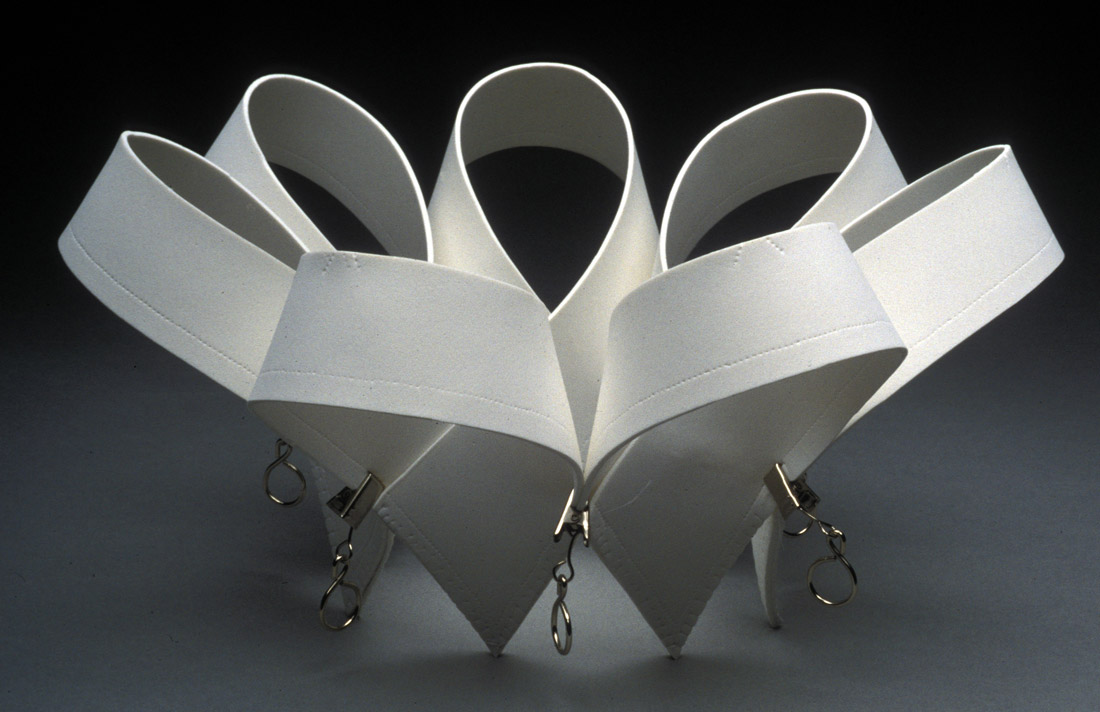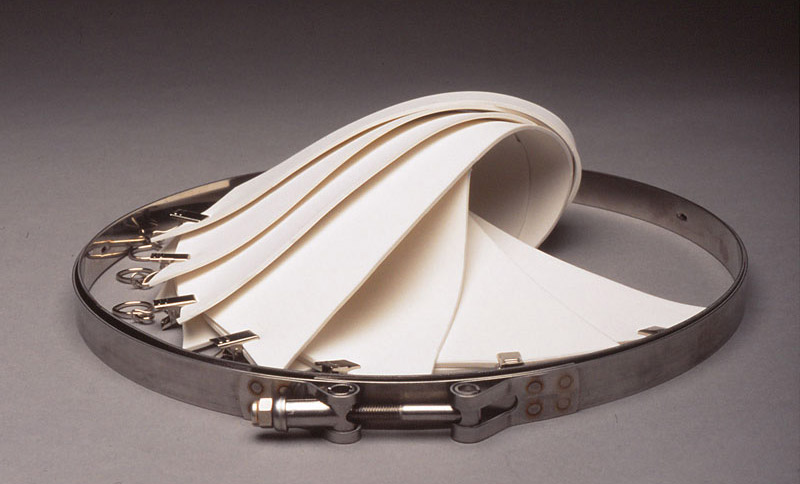The Shirt Collar
There was once a fine gentleman, the whole of whose equipment existed of a boot-jack and a comb, but he had the finest shirt Collar in the world, and it is about this Collar that we are to hear the story. He was now of an age to think of marrying, and it so happened that at the wash gate he met with a garter.
“Dear me,” said the Collar; “never have I seen any one so slender, so refined, so soft or so charming. Might I ask your name?”
“That I shall not tell you,” said the Garter.
“Where do you reside?” asked the Collar.
But the Garter was very shy, and thought the question an awkward one to answer.
“You must be a girdle,” said the Collar; “a sort of inner girdle! I see, I see; you serve both for use and ornament, little lady.”
“You must not address me,” said the Garter. “I do not think I have given you any encouragement to do so.”
“Oh, if anyone is as beautiful as you are,” said the Collar, “that is encouragement enough.”
“Do not come too near me,” said the Garter; “you look so much like a man.”
“Well, yes, I am a fine gentleman,” said the Collar. “I own a boot-jack and a comb.” Now this was really not the truth; it was his master who owned them, but he was boasting.
“Don’t come near me!” said the Garter. “I’m not accustomed to it.”
“Miss Prim!” said the Collar. They were then taken out of the tub, starched, and hung on a chair in the sun, and afterwards laid on the ironing board. Then came the hot iron.
“Lady!” said the Collar. “Little widow lady, I’m getting quite hot, a change is coming over me! All my folds are being flattened out. You’ll burn a hole in me. Will you be mine?” “Rag!” said the iron, passing proudly over the collar; she fancied herself a steam engine travelling along the rails and dragging a train. “Rag!” said she. The Collar had become ravelled at the corners, so now came the paper-scissors, to cut the ravelling off.
“Oh!” said the Collar. “You are, of course, the Première Danseuse. How you do stretch your legs; the most charming thing I ever saw. No human being can do the like.”
“I know that,” said the Scissors.
“You deserve to be a countess,” said the Collar. “My whole property consists of a fine gentleman, a boot-jack and a comb. Oh, were I but a count!”
“Are you proposing to me?” said the Scissors, much annoyed, and gave him a smart cut; so he was dismissed from service.
“I suppose I must try the comb,” said the Collar. “It’s very remarkable how you keep all your teeth little lady! Have you never thought of becoming engaged?”
“Yes, to be sure I have,” said the comb. “I’m engaged to the boot-jack.”
“Engaged?” said the Collar? There was nobody left to propose to, so he took to despising the whole business.
A long time passed by, and the Collar found himself in a box, at the paper mill, with a vast collection of rags, the fine ones by themselves and the coarse by themselves, as is right and proper. All of them had a great deal to tell, but the Collar most of all, for he was a regular prating Jack.
“I’ve had a terrible lot of sweethearts,” he said; “I hadn’t a moment’s peace. In my time I was a fine gentleman – starched, too. I had a boot-jack and a comb, which I never used. You ought to have seen me then; seen me when I was laid aside. I shall never forget my first love! A girdle she was, most delicate and soft and charming. She threw herself into a washing-tub for love of me. Yes, and there was a widow, who was burning hot, but I let her alone and she turned black. And there was a première danseuse; she gave me the scar I carry now – she was so jealous. My own comb, too, fell in love with me, and lost all her teeth from unrequited affection. Yes, I’ve had many such experiences; but what caused me most pain is the Garter – I should say the girdle – who went into the washing-tub. I’ve a great deal on my conscience, and I’m really desirous of being made into white paper.”
And so they were; all the rags were made into white paper, but the Collar was made into precisely this bit of white paper you see here, on which this story is printed; and that’s because he boasted so fearfully in his later days of what never happened. And we must take care not to behave like that, for we really can never be sure that we shan’t get into the rag box, one of these days, and be turned into white paper and the whole of our story printed on us, even the most private bits, and be obliged to run about telling it, like the Collar.


Images © Nicola Naismith Ring 2003
The Shirt Collar was written by Hans Christian Andersen (1805-1875), and was translated from Danish by M.R. James (1862-1936) as part of Hans Andersen Forty-Two Stories (1930).
